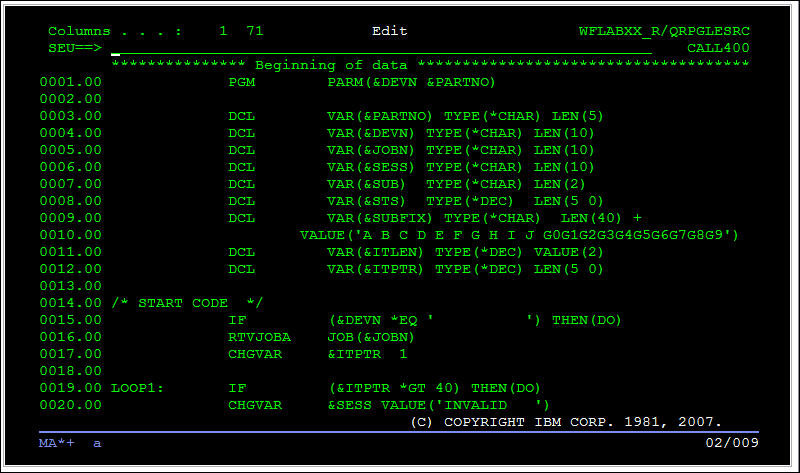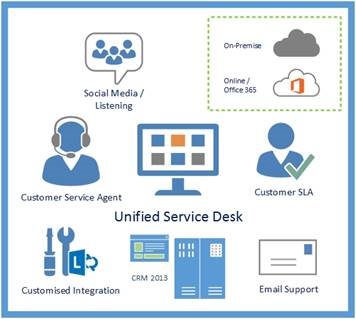The Case for Microsoft CRM Unified Service Desk
 For the last 20 years, I have seen technology go in a virtual circle. When I started my career, I worked at Nike in the warehouse using green screen dummy terminals to manage inventory, orders, and shipments. I moved from the warehouse to the IT department where I built many tailored business applications in Visual Basic 5 and 6. To deploy the applications, I walked around to the 200+ computers manually installing a program using a floppy disc. Doing a QFE was not that quick back then. Not long after that, the internet started to play a real role in the day-to-day life of the business. It was not nearly the modern internet we have today, but it was on the way. Developers, IT admins, and other IT staff still needed the 500+ page books on Windows Servers, Security, Database Design and Theory, and Application Development.
For the last 20 years, I have seen technology go in a virtual circle. When I started my career, I worked at Nike in the warehouse using green screen dummy terminals to manage inventory, orders, and shipments. I moved from the warehouse to the IT department where I built many tailored business applications in Visual Basic 5 and 6. To deploy the applications, I walked around to the 200+ computers manually installing a program using a floppy disc. Doing a QFE was not that quick back then. Not long after that, the internet started to play a real role in the day-to-day life of the business. It was not nearly the modern internet we have today, but it was on the way. Developers, IT admins, and other IT staff still needed the 500+ page books on Windows Servers, Security, Database Design and Theory, and Application Development.
I left Nike after 6 years and joined Microsoft. Shortly after joining Microsoft, the technology trend moved away from tailored desktop applications like those I built early in my career and migrated to the web. As powerful as this web was then, it didn’t have the richness of a custom-built desktop application. In today’s world, we are starting to see a hybrid between the dummy terminal, desktop applications, and web applications. One example is Microsoft Dynamics CRM Unified Service Desk (USD). Although the application has been around for a couple of years, the latest release (3.0) offers a rich and power combination of a desktop application and the ease and scalability of web applications.
Microsoft CRM USD Overview
 Microsoft Dynamics CRM is a very rich and powerful platform exposed through a browser, Outlook, mobile, and API. The downside to the web experience, however, just as with most web applications, it is not a tailored experience for a specific job function (like a Customer Service Rep) and can be slower than desktop applications. Microsoft CRM USD solves this by providing a XAML framework completely integrated with Microsoft CRM API, the CRM database, and the .NET platform for extending business logic or custom experience. This may sound very similar to building a custom .NET application and including the CRM DLLs, but the USD framework accelerates development by leveraging the CRM security model, APIs, .NET framework, and a XAML Visual Studio add-in for building custom pages. There isn’t a need to make a connection to CRM to retrieve data. You don’t have to worry about the security since it is handled by CRM. All the CRM API commands are at a developer’s disposal if needed. If you don’t have a developer or want to stick with configuration options, USD offers a very impressive set of configuration opens for handling business rules, adding custom events and actions and even retrieving additional data from CRM.
Microsoft Dynamics CRM is a very rich and powerful platform exposed through a browser, Outlook, mobile, and API. The downside to the web experience, however, just as with most web applications, it is not a tailored experience for a specific job function (like a Customer Service Rep) and can be slower than desktop applications. Microsoft CRM USD solves this by providing a XAML framework completely integrated with Microsoft CRM API, the CRM database, and the .NET platform for extending business logic or custom experience. This may sound very similar to building a custom .NET application and including the CRM DLLs, but the USD framework accelerates development by leveraging the CRM security model, APIs, .NET framework, and a XAML Visual Studio add-in for building custom pages. There isn’t a need to make a connection to CRM to retrieve data. You don’t have to worry about the security since it is handled by CRM. All the CRM API commands are at a developer’s disposal if needed. If you don’t have a developer or want to stick with configuration options, USD offers a very impressive set of configuration opens for handling business rules, adding custom events and actions and even retrieving additional data from CRM.
Microsoft CRM USD and the Customer Service Rep
Being a customer service rep (CSR), in my opinion, is a very challenging job. As a CSR, you are often dealing with frustrated customers, are working with many tools to get the information needed and sometimes being a messenger delivering a message that the customer does not want to hear (AKA, don’t shoot the messenger). I do not envy the job.
Celedon Partners is working on a project to reduce a CSR’s overall call time by roughly 300%, reduce the number of application needed from 60 to 5, improve the end customer’s experience and decrease of the operations cost to support up to 800 CSRs. This is a very tall order. The platform choose is Microsoft Dynamics CRM USD. Why? Simply put – it supports a tailored experience for the CSR providing an incredibly efficient, fast and integrated tool. As an additional perk, it is relatively easy to configure and develop with enabling a fast(er) development cycle.
The project team went from concept to production in two months supporting 200 CSRs. In this first iteration, USD absorbed 3 existing applications (simplifying and reducing operations costs), reduced the CSR click count from 50+ to roughly 5 and what was a 16-minute initial call validation process to consistently under 30 seconds. The 200 CRS has taken thousands of calls during this time and the metrics collected has provided rich insight into how to improve their job and improve the CSRs training. There have been challenges along the way and considerable lessons learned, but as a whole, the team and USD application have lived up to its potential.
The client has a significant roadmap of where they would like to take Microsoft Dynamics CRM and USD. USD is not a one size fits all solution and it comes with its own challenges, but when appropriately applied, it can make a significant difference in a business, the employees of the business and their customers.
More to come.
Chris
Shout out to Neil Parkhurst for all his contributions to the Microsoft CRM Community specifically to USD!